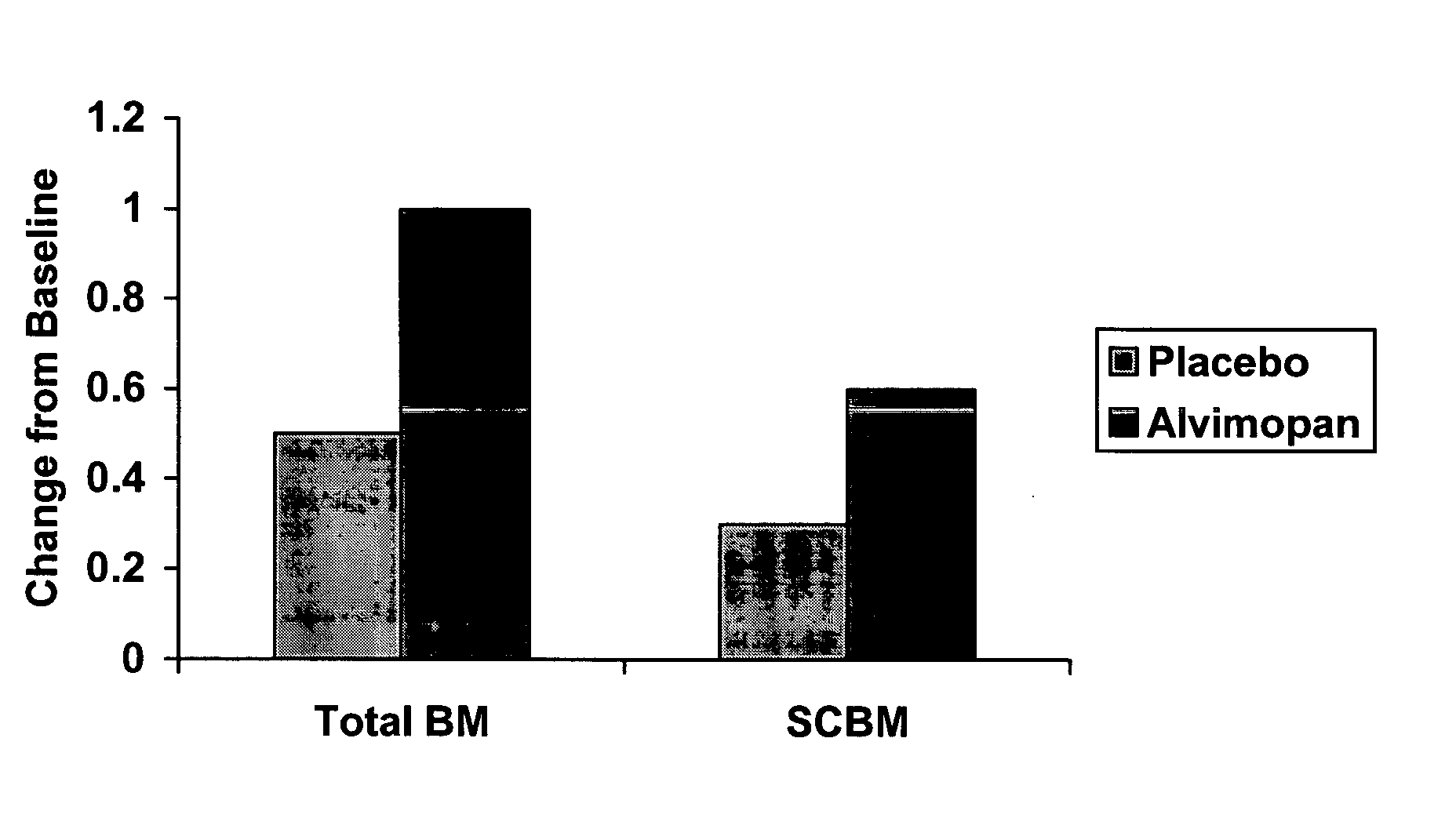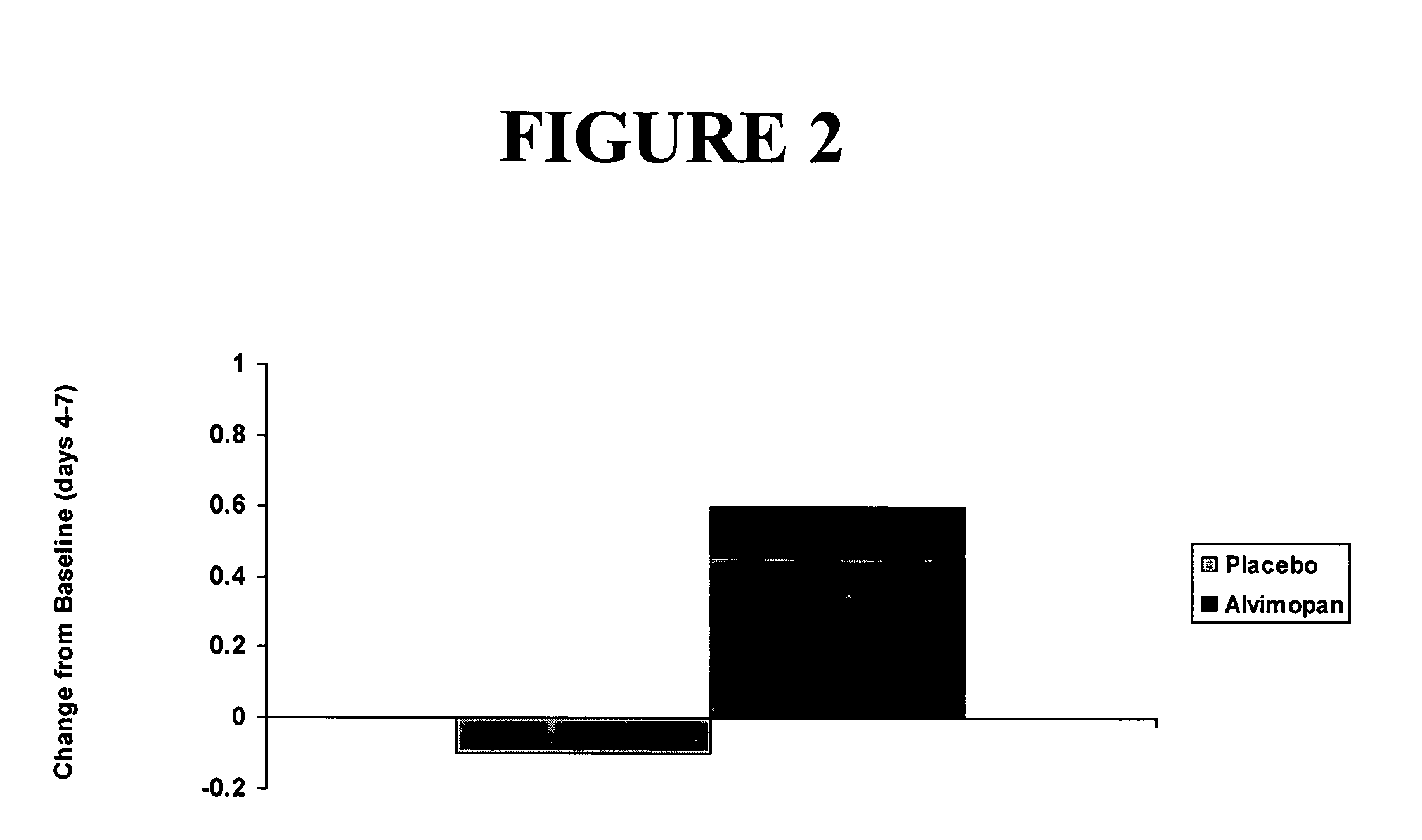Methods of preventing and treating non-opioid induced gastrointestinal dysfunction
a non-opioid induced gastrointestinal and gastrointestinal disease technology, applied in the field of preventing and treating gastrointestinal dysfunction, can solve the problems of unsatisfactory side effects, diarrhea, abdominal pain, etc., and achieve the effects of preventing non-opioid induced gastrointestinal dysfunction, slow colonic transit, and chronic constipation
- Summary
- Abstract
- Description
- Claims
- Application Information
AI Technical Summary
Benefits of technology
Problems solved by technology
Method used
Image
Examples
example 1
[0288] Methodology:
[0289] This was an ascending dose level safety study (Phase I) intended to determine the frequency and severity of adverse events (AEs) and to estimate the maximum tolerated dose of alvimopan. Subjects were screened to ensure their status as healthy volunteers. They were only enrolled if they had no clinically significant abnormalities on history, physical, or laboratory examinations. Post study physical examination and laboratory tests, including serum chemistries and complete blood count, were performed.
[0290] Duration of Treatment:
[0291] Alvimopan or placebo was administered TID for 4 days.
[0292] Reference Therapy, Dose, and Mode of Administration:
[0293] One subject in each dose group was randomly assigned to receive placebo that was identical in appearance to the active study medication.
[0294] Results:
[0295] Forty-four subjects were randomized for treatment. One subject at each dose level received placebo (N=5); the rest received alvimopan. Alvimopan wa...
example 2
[0296] A single-center, placebo-controlled, randomized, double-blind, balanced two period cross-over study of the effect of alvimopan on GI transit in subjects with functional constipation was carried out.
[0297] Subjects (n=24) meeting the initial screening criteria for functional constipation by history, and who had 3 or fewer stools during a 7-day screening period, were randomly assigned to receive initially either orally-administered alvimopan, 3 mg twice daily for 7 days or matching placebo. Following a two- to four-week washout period, subjects received the opposite treatment for a 7-day period. Subjects did not enter second period unless their bowel function had returned to baseline levels as subjectively assessed by the subject. Subjects' diets were not to be changed significantly while participating in the study.
[0298] Subjects underwent measurement of their whole bowel transit (radio-opaque markers) and oral-cecal transit (hydrogen-breath test) prior to receiving the firs...
PUM
| Property | Measurement | Unit |
|---|---|---|
| Time | aaaaa | aaaaa |
| Time | aaaaa | aaaaa |
| Time | aaaaa | aaaaa |
Abstract
Description
Claims
Application Information
 Login to View More
Login to View More - R&D
- Intellectual Property
- Life Sciences
- Materials
- Tech Scout
- Unparalleled Data Quality
- Higher Quality Content
- 60% Fewer Hallucinations
Browse by: Latest US Patents, China's latest patents, Technical Efficacy Thesaurus, Application Domain, Technology Topic, Popular Technical Reports.
© 2025 PatSnap. All rights reserved.Legal|Privacy policy|Modern Slavery Act Transparency Statement|Sitemap|About US| Contact US: help@patsnap.com



